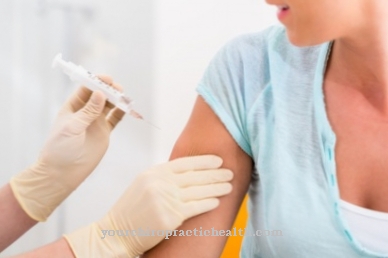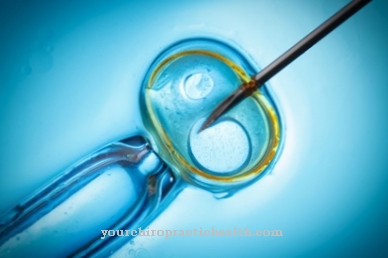Cardiopulmonary resuscitation (CPR) is used for acute heart failure. If used correctly, the patient has a good chance of being resuscitated. If the start is too late or if the Chest compressions, a lack of oxygen can cause irreparable damage to the brain within three minutes.
What is chest compressions?

Cardiac massage is a life-saving immediate measure. It is used when a person is diagnosed with cardiac arrest. Implementation should begin immediately. The chances of a successful resuscitation decrease by 10 percent every minute. After ten minutes, the chance of a successful resuscitation is 0 percent, the brain is clinically dead.
CPR must be performed until some of the emergency services arrive and take over, or until the person begins to breathe again.
Function, effect & goals
Before the chest compressions can be performed, it must be checked that the unconscious person is really no longer breathing. To find out, kneel down next to the injured person. The head is now carefully hyperextended to clear the airways.
For this, one hand is placed on the forehead and the other on the chin of the unconscious. Now the head is tilted back and the chin lifted slightly. Now you hold your own ear close to your mouth and nose in order to hear the possibly expelled air and to feel it on your cheek. At the same time, it is observed whether the chest rises and falls. This process should take no more than ten seconds.
If no breathing can be found, the ambulance will be contacted immediately on 112. Then immediately start the chest compressions. For this purpose, possible, disturbing clothing and jewelry is removed or pushed up to expose the upper body. For women, the bra may need to be removed.
Then you place the heel of one hand on the center of the chest of the injured person and the ball of the other hand on your own hand for support and interlock your fingers. Now apply even pressure with your hands on the breastbone. With arms outstretched, from top to bottom, the sternum must be pressed down about five to six centimeters. Then you relieve the upper body again, but without taking your hands off the chest. The two phases (pressure and relief) should cover an equally long period of time.
This must now be repeated 30 times with a little less than two compressions per second (frequency: 100 to 120 times per minute). After that, the affected person must be ventilated. The nostrils are tightly closed with the thumb and forefinger of one hand so that no air can escape. Open the mouth of the unconscious person slightly and remove any foreign objects such as vomit or teeth. It is essential to ensure that the head is properly tucked backwards so that the airways are really free.
Now breathe in normally yourself. Then close the injured person's mouth tightly with your own lips and evenly blow air into it for a second. At the same time, it should be observed that the person's chest rises slightly to see if ventilation is successful. Repeat the process a second time. Alternatively, the person's mouth can be closed and air blown into the body through the nose.
If the person does not react to the measures, the cardiac massage is continued, always at a rhythm of 30 compressions and 2 breaths. Cardiopulmonary resuscitation can be ended when the emergency services arrive or the person concerned shows signs of life again (breathing, movements, coughing). If breathing but persistent unconsciousness, the injured person must be turned into a stable side position.
Risks, side effects & dangers
The methods differ slightly for infants and children. But the 30: 2 rule also applies here. Infants (up to 1 year of age) should not be exposed to as much pressure as adults. They should only achieve a pressure depth of about 2 centimeters. In addition, it starts with 5 breaths, followed by cardiac massage for one minute at the rhythm of 30 compressions and 2 breaths. Then the emergency call is sent and cardiopulmonary resuscitation is continued immediately.
In children (up to puberty, after which they are treated like adults) the pressure should not be more than 2 to 4 centimeters. But here, too, you first start with 5 breaths and only then begin with the chest compressions (30: 2). If foreign bodies or other causes make ventilation impossible, only compressions are performed on the chest.
If there is an AED (Automatic External Defibrillator) nearby, it should be used, as this greatly increases the chances of the injured person. It is very easy to use, because after switching on all important steps are spoken out loud by the device and they only have to be followed. The device decides for itself whether it makes sense to trigger an electric shock. Despite the AED, chest compressions must be performed because the device alone is not sufficient for resuscitation. The AED can also be used on children, unless there are no special electrodes on the device. Or a warning is printed not to use it on children.













.jpg)

.jpg)
.jpg)











.jpg)